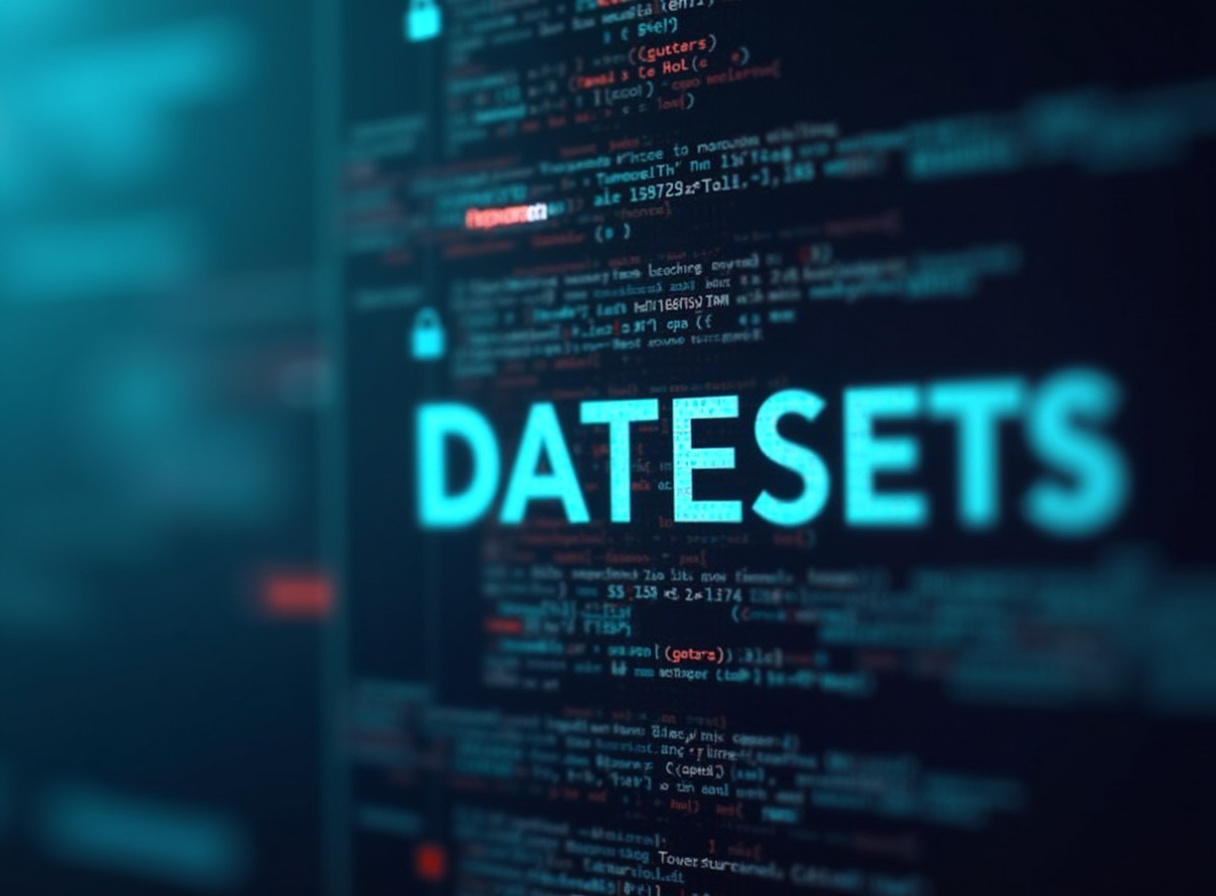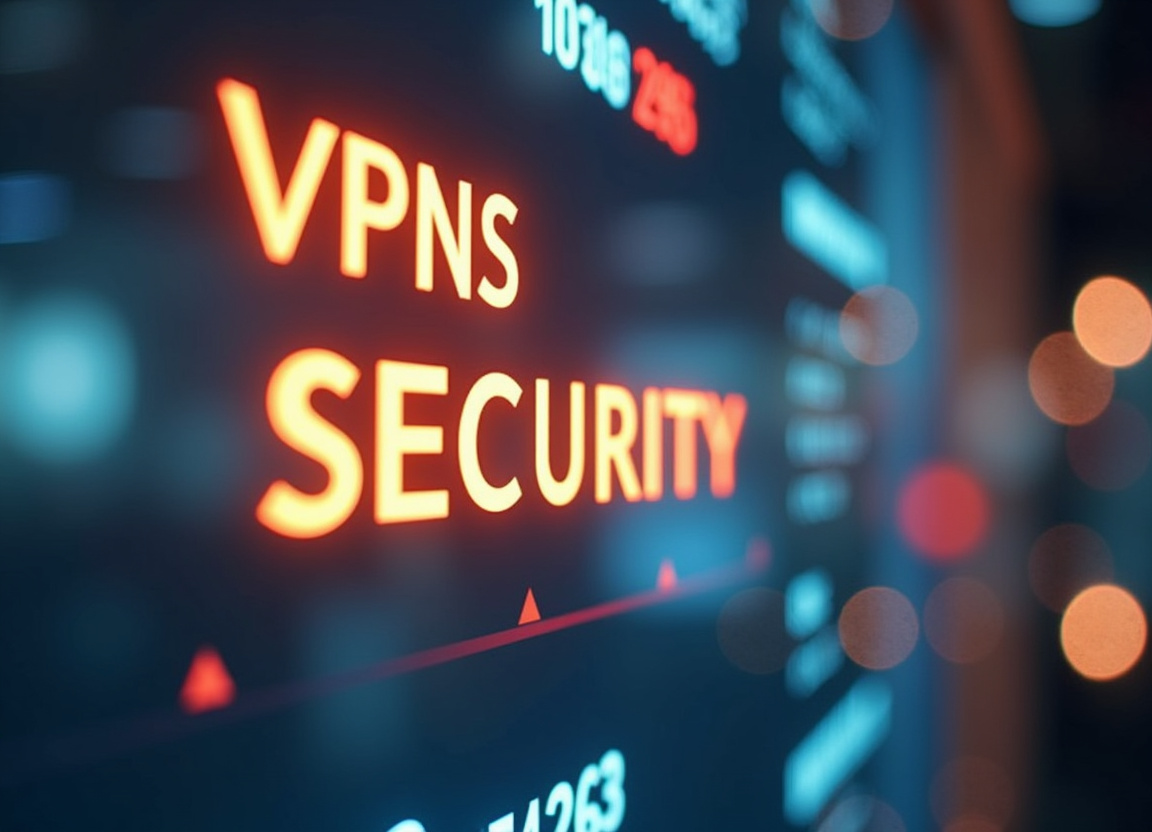VPNs for Machine Learning: Securing Data Processing

Table of Contents
Introduction: Protecting Machine Learning Workloads with VPNs
The burgeoning field of machine learning (ML) has revolutionized numerous industries, offering unprecedented capabilities in data analysis, prediction, and automation. However, this transformative power is inextricably linked to the vast amounts of data required to train and refine ML models. This data, often sensitive and proprietary, becomes a prime target for malicious actors, making data security a paramount concern for organizations leveraging machine learning.
The intersection of machine learning and data security presents a complex challenge: how to harness the potential of ML while safeguarding the integrity and confidentiality of the underlying data assets. This is where the concept of a "machine learning VPN" becomes critically relevant. Traditional security measures may prove insufficient to address the unique vulnerabilities associated with ML workflows, particularly those involving distributed data processing, cloud-based infrastructure, and collaborative research environments.
Data breaches, unauthorized access, and intellectual property theft can have devastating consequences, ranging from financial losses and reputational damage to compromised research outcomes and regulatory penalties. The need for robust data processing security in the context of machine learning is therefore undeniable. Datasets, the very foundation of ML models, require stringent protection against unauthorized access, modification, or exfiltration.
Analytics security, ensuring the confidentiality and integrity of the insights derived from ML, is equally crucial. A "VPN for ML" addresses these concerns by creating a secure, encrypted tunnel for data transmission and access, effectively shielding data from prying eyes and malicious interference. This encrypted connection extends beyond simple data transfer; it encapsulates the entire ML workflow, encompassing data ingestion, pre-processing, model training, evaluation, and deployment.
Consider a scenario where a multinational pharmaceutical company is developing a new drug using machine learning. The dataset comprises patient data from clinical trials conducted across different countries, genomic information, and proprietary chemical structures. This data is highly sensitive and valuable, subject to strict regulatory requirements like HIPAA and GDPR.
Without adequate security measures, a data breach could expose confidential patient information, compromise the company's intellectual property, and lead to significant financial penalties. A "machine learning VPN" can be used to create secure connections between the different research sites, ensuring that all data transmitted is encrypted and protected from unauthorized access. Furthermore, the VPN can be configured to enforce strict access control policies, limiting access to sensitive data only to authorized personnel.
The integration of a VPN into the machine learning pipeline represents a proactive approach to data security, mitigating risks associated with insecure networks, vulnerable cloud environments, and unauthorized access attempts. The benefits extend beyond mere protection against external threats; a well-configured VPN can also enhance internal data governance and compliance with regulatory mandates. Imagine a financial institution using machine learning to detect fraudulent transactions.
The dataset includes customer transaction history, credit scores, and other sensitive financial information. To comply with regulations like PCI DSS, the institution must ensure that this data is protected from unauthorized access and modification. A "machine learning VPN" can be used to create a secure environment for data processing and analysis, preventing unauthorized access to the data and ensuring the integrity of the fraud detection models.
Moreover, the VPN can be used to log all data access and modification activities, providing an audit trail for compliance purposes. Implementing a "machine learning VPN" strategy requires a comprehensive understanding of ML workflows, data security principles, and the capabilities of various VPN technologies. It's not merely about selecting any VPN, but choosing one that aligns with the specific security requirements, performance needs, and scalability demands of the ML environment.
The chosen VPN should support strong encryption protocols, such as AES-256, and offer features like multi-factor authentication and intrusion detection. It should also be compatible with the cloud platforms and data processing tools used in the ML workflow. For instance, if the organization is using AWS SageMaker for model training, the VPN should be able to seamlessly integrate with the AWS network infrastructure.
The goal is to create a seamless and secure environment where data scientists and engineers can collaborate, innovate, and develop cutting-edge ML solutions without compromising data security. This requires careful planning, configuration, and ongoing maintenance. Proper implementation also includes rigorous testing, monitoring, and ongoing maintenance to ensure the VPN remains effective against evolving threats and adapts to the changing needs of the machine learning infrastructure.
Regular security audits and penetration testing should be conducted to identify and address any vulnerabilities in the VPN configuration. Ultimately, the successful integration of a VPN into the ML ecosystem is a strategic investment that safeguards valuable data assets, protects intellectual property, and fosters a culture of security within the organization. By prioritizing "data processing security" through the implementation of a "machine learning VPN," organizations can unlock the full potential of machine learning while mitigating the inherent risks.
This proactive approach not only protects against data breaches and financial losses but also builds trust with customers and stakeholders, enhancing the organization's reputation and competitive advantage. The implementation of data access policies and training for the people are other important considerations.
Machine learning presents unique security challenges that differ significantly from traditional IT security concerns. While conventional security measures like firewalls and intrusion detection systems remain important, they often fall short in addressing the specific vulnerabilities inherent in ML workflows. A key area of concern is "dataset protection." The sheer volume and sensitivity of data used to train ML models make them an attractive target for attackers.
These datasets may contain personally identifiable information (PII), financial records, healthcare data, or other confidential information, the compromise of which can lead to severe legal and ethical repercussions. Furthermore, the algorithms themselves can be vulnerable. Adversarial attacks, where carefully crafted inputs are designed to mislead or corrupt ML models, can have devastating consequences in critical applications like autonomous driving or fraud detection.
The impact isn't just on the data itself, but the integrity of the model and its ability to make accurate predictions. Consider a scenario where an attacker injects malicious data into the training set of a facial recognition system used for airport security. The modified model might then fail to identify certain individuals as potential threats, creating a significant security vulnerability.
This highlights the importance of data validation and anomaly detection techniques to identify and mitigate the risk of adversarial attacks. Moreover, the complexity of ML models makes them difficult to understand and debug, increasing the risk of unintended biases or vulnerabilities. Another significant challenge lies in the distributed nature of many ML projects.
Data scientists and engineers often collaborate across different locations and organizations, utilizing cloud-based platforms and shared data repositories. This distributed environment increases the attack surface and makes it more difficult to enforce consistent security policies. For example, a team of researchers working on a collaborative project might use a shared cloud storage service to store and share datasets.
If the storage service is not properly secured, it could be vulnerable to unauthorized access, leading to a data breach. The use of external libraries and open-source frameworks, while accelerating development, can also introduce security risks if not carefully vetted and managed. These dependencies may contain vulnerabilities that can be exploited to compromise the entire ML system.
Regularly updating these dependencies and using vulnerability scanning tools can help to mitigate this risk. "Data processing security" in machine learning must therefore address a wide range of threats, including data breaches, adversarial attacks, model poisoning, and supply chain vulnerabilities. Traditional security approaches often focus on perimeter defense, but in the context of ML, a more layered and proactive approach is required.
This includes techniques like differential privacy, which adds noise to the data to protect individual privacy while still allowing for meaningful analysis, and secure multi-party computation (SMPC), which enables collaborative data analysis without revealing the underlying data to any single party. Furthermore, data encryption, both in transit and at rest, is essential to protect data from unauthorized access. "Analytics security" is another critical aspect.
The insights derived from ML models can be highly sensitive and valuable. Unauthorized access to these insights can provide competitors with a strategic advantage or be used for malicious purposes. For example, analyzing customer behavior data could reveal sensitive information about their preferences and vulnerabilities, which could be exploited for targeted phishing attacks.
Therefore, it's essential to protect not only the data used to train the models but also the results generated by those models. This requires careful access control, encryption, and auditing mechanisms to ensure that only authorized individuals can access and interpret the insights. Role-based access control (RBAC) can be used to restrict access to sensitive data and insights based on the user's role and responsibilities.
The "VPN for ML" plays a crucial role in addressing many of these challenges. By creating a secure and encrypted tunnel for data transmission and access, it helps to protect data in transit and at rest, mitigates the risk of data breaches, and provides a secure environment for distributed collaboration. For instance, when transferring large datasets to a cloud-based training environment, a VPN can ensure that the data is protected from eavesdropping and tampering.
However, it's important to remember that a VPN is just one component of a comprehensive security strategy. It must be integrated with other security measures, such as strong authentication, access control, and vulnerability management, to provide a holistic defense against the diverse threats facing machine learning systems. Multi-factor authentication (MFA) can add an extra layer of security by requiring users to provide multiple forms of authentication before accessing sensitive data or systems.
Furthermore, regular vulnerability assessments and penetration testing can help to identify and address security weaknesses before they can be exploited by attackers.
A VPN provides a secure, encrypted connection that acts as a shield for data as it moves between different points in the machine learning workflow. Its primary function is to create a private network over a public infrastructure (like the internet), ensuring that all data transmitted is protected from eavesdropping and tampering. In the context of a "machine learning VPN," this encryption is crucial for several reasons.
First, it safeguards sensitive data during transit, preventing unauthorized access by malicious actors who might be monitoring network traffic. Second, it masks the IP address of the user or device, providing an additional layer of anonymity and making it more difficult to track their online activities. Third, it allows for secure access to resources that might be restricted based on geographic location.
The practical implications of these benefits are significant for organizations working with machine learning. For example, consider a scenario where a data scientist needs to access a large dataset stored on a remote server. Without a VPN, the data transmitted between the data scientist's computer and the server would be vulnerable to interception.
An attacker could potentially capture this data and use it for malicious purposes, such as stealing sensitive information or corrupting the dataset. By using a "VPN for ML," the data scientist can create a secure connection to the server, encrypting all data transmitted between their computer and the server and preventing unauthorized access. Furthermore, VPNs can enhance "data processing security" by providing a secure environment for collaborative data analysis.
In many machine learning projects, data scientists and engineers from different organizations or locations need to collaborate on the same dataset. This collaboration can be challenging from a security perspective, as it requires sharing sensitive data with external parties. A VPN can be used to create a secure, encrypted tunnel between the different organizations or locations, allowing data scientists and engineers to collaborate on the dataset without exposing it to unauthorized access.
For instance, researchers from different universities collaborating on a medical imaging project can use a VPN to securely share and analyze patient data, ensuring compliance with privacy regulations like HIPAA. The use of a VPN also contributes to "dataset protection" by limiting the attack surface. By routing all network traffic through a VPN server, the actual IP address of the user or device is hidden, making it more difficult for attackers to identify and target specific systems.
This is particularly important for organizations that are using cloud-based platforms for machine learning, as these platforms are often exposed to the public internet. A "machine learning VPN" can provide an additional layer of security, protecting the organization's cloud resources from unauthorized access and attacks. Imagine a company storing its ML training data in a cloud storage service.
A VPN can be used to protect the connection between the company's internal network and the cloud storage, preventing attackers from intercepting data or gaining unauthorized access to the cloud storage account. Beyond data transmission and access, VPNs can also enhance "analytics security." The insights derived from machine learning models can be highly sensitive and valuable, and unauthorized access to these insights can have significant consequences. A VPN can be used to protect the access to these insights, ensuring that only authorized individuals can view and analyze them.
For example, a financial institution using machine learning to detect fraudulent transactions can use a VPN to protect access to the fraud detection reports, preventing unauthorized individuals from accessing sensitive customer data. However, it is important to note that a VPN is not a silver bullet for all security challenges in machine learning. While it provides a strong layer of protection for data in transit and access, it does not protect against other types of threats, such as adversarial attacks or model poisoning.
Therefore, it is essential to integrate a VPN with other security measures, such as strong authentication, access control, and vulnerability management, to provide a comprehensive defense against the diverse threats facing machine learning systems. Choosing a reputable VPN provider with a strong track record of security and privacy is also crucial. Organizations should carefully evaluate the provider's security policies, encryption protocols, and logging practices before entrusting them with their sensitive data.
Regularly monitoring VPN logs and security alerts can help to identify and respond to potential security incidents.
Enhancing Security for Subscription Services via VPN integration
While a VPN offers significant security enhancements for machine learning workflows, its implementation requires careful consideration and planning. Choosing the right VPN for your specific needs, configuring it correctly, and integrating it seamlessly with your existing infrastructure are crucial for maximizing its effectiveness. The first step is to assess your security requirements.
Consider the types of data you are working with, the sensitivity of that data, the regulatory requirements you need to comply with, and the potential threats you face. This assessment will help you determine the level of security you need from your VPN. For example, if you are working with highly sensitive personal data, you will need a VPN that supports strong encryption protocols and offers advanced security features like multi-factor authentication and intrusion detection.
Next, you need to evaluate different VPN options. Not all VPNs are created equal. Some are designed for general internet browsing, while others are specifically tailored for enterprise use.
When choosing a "machine learning VPN," it's important to look for features that are relevant to your ML workflow. This might include support for multiple protocols (like OpenVPN, IPSec, and WireGuard), server locations in regions where your data is stored, and the ability to handle large amounts of data traffic without performance degradation. The scalability of the VPN solution is also important.
As your machine learning projects grow and your data volumes increase, you'll need a VPN that can scale to meet your evolving needs. Cloud-based VPN solutions often offer greater scalability than on-premises solutions. Configuration is another critical aspect.
A misconfigured VPN can be just as dangerous as no VPN at all. It's important to configure the VPN correctly to ensure that all data traffic is being encrypted and routed through the VPN server. This includes setting up proper firewall rules, configuring access control policies, and enabling logging and monitoring.
You should also ensure that the VPN client software is properly configured on all devices that will be accessing the ML environment. This might involve installing the VPN client on data scientists' laptops, configuring it to connect to the VPN server automatically, and providing training on how to use the VPN correctly. Automating the VPN configuration process can help to reduce the risk of human error and ensure consistent security across all devices.
Integration with existing infrastructure is also key. The VPN should be able to seamlessly integrate with your existing network infrastructure, cloud platforms, and data processing tools. This might involve configuring the VPN to work with your existing firewall, integrating it with your identity management system, and setting up secure connections to your cloud-based data storage and processing services.
Using infrastructure-as-code tools can help automate and streamline the integration process. Beyond the technical aspects, it's also important to establish clear policies and procedures for VPN usage. This should include guidelines on who is authorized to use the VPN, how the VPN should be used, and what types of data can be accessed through the VPN.
Regular security audits and penetration testing can help to identify and address any vulnerabilities in the VPN configuration and policies. Employee training is also essential. Data scientists and engineers need to be educated on the importance of using the VPN correctly and the potential risks of bypassing it.
They should also be trained on how to identify and report security incidents. Finally, ongoing monitoring and maintenance are crucial for ensuring that the VPN remains effective over time. Regularly monitoring VPN logs can help to identify suspicious activity and potential security breaches.
Keeping the VPN software up to date is also important, as updates often include security patches that address newly discovered vulnerabilities. Regularly reviewing and updating your VPN configuration and policies can help to ensure that they remain aligned with your evolving security needs. Choosing a VPN provider that offers proactive security monitoring and maintenance services can offload some of the burden from your internal IT team.
The Future of VPNs in Subscription Services: AI, Blockchain, and Integrated Security
In conclusion, securing data processing within machine learning environments is not merely a best practice, but a fundamental requirement for responsible and effective AI development. The unique vulnerabilities inherent in ML workflows, coupled with the increasing sophistication of cyber threats, necessitate a proactive and multi-faceted approach to security. A "machine learning VPN" serves as a critical component of this approach, providing a secure and encrypted tunnel for data transmission and access, thereby mitigating the risks of data breaches, unauthorized access, and compromised analytics.
However, it's crucial to recognize that a VPN is not a panacea. Its effectiveness hinges on careful selection, proper configuration, seamless integration with existing infrastructure, and the establishment of clear policies and procedures for usage. Beyond the technical aspects of VPN implementation, fostering a culture of security awareness within the organization is paramount.
Data scientists and engineers must understand the importance of data security and their role in maintaining it. Regular training sessions, clear communication of security policies, and the promotion of a security-conscious mindset can significantly reduce the risk of human error, which is often a major contributing factor to security breaches. Furthermore, organizations should invest in robust data governance frameworks that define clear roles and responsibilities for data access, usage, and protection.
These frameworks should outline specific procedures for handling sensitive data, ensuring compliance with regulatory requirements, and responding to security incidents. The future of machine learning security will likely involve even more sophisticated techniques, such as homomorphic encryption, which allows computations to be performed on encrypted data without decrypting it first, and federated learning, which enables model training on decentralized data sources without sharing the raw data. These emerging technologies offer promising avenues for enhancing data privacy and security in machine learning, but they also introduce new challenges that organizations must be prepared to address.
As machine learning continues to evolve and become increasingly integrated into critical infrastructure, the importance of security will only grow. Organizations that prioritize data processing security and invest in robust security measures will be best positioned to unlock the full potential of machine learning while mitigating the inherent risks. The keyword "data processing security" in the context of machine learning encompasses a wide range of practices, including data encryption, access control, vulnerability management, intrusion detection, and incident response.
It's a holistic approach that aims to protect data throughout its entire lifecycle, from creation to deletion. Similarly, "dataset protection" involves implementing specific measures to safeguard the integrity and confidentiality of datasets used for model training and evaluation. This includes data validation, anomaly detection, and protection against adversarial attacks.
"Analytics security" focuses on securing the insights derived from machine learning models, preventing unauthorized access to these insights and ensuring their accuracy and reliability. The strategic use of a "VPN for ML" in conjunction with other security measures can significantly enhance the overall security posture of a machine learning environment. By addressing the specific security challenges associated with ML workflows, organizations can protect their valuable data assets, safeguard their intellectual property, and build trust with their customers and stakeholders.
As machine learning becomes increasingly prevalent across industries, prioritizing security will be essential for realizing its transformative potential and avoiding the potentially devastating consequences of data breaches and security incidents. Ultimately, a commitment to data processing security is not just a technical imperative, but a ethical one. Organizations have a responsibility to protect the data entrusted to them and to ensure
Stay Updated
Get the latest VPN news, tips, and exclusive deals to your inbox.




